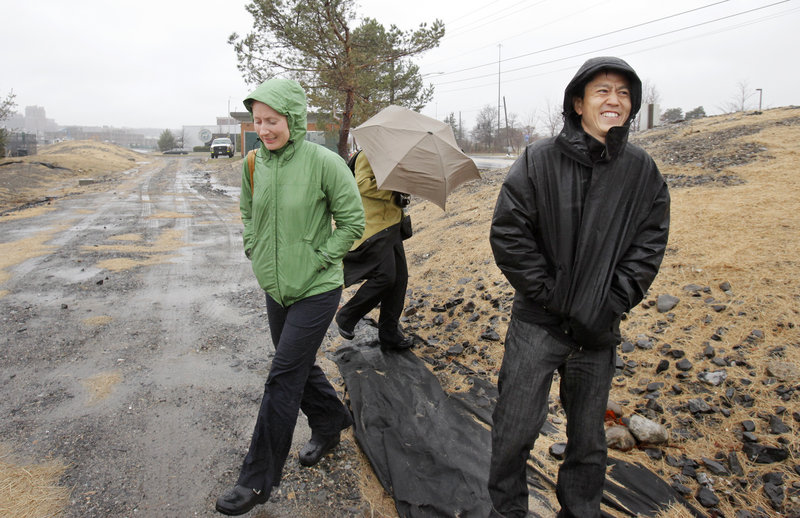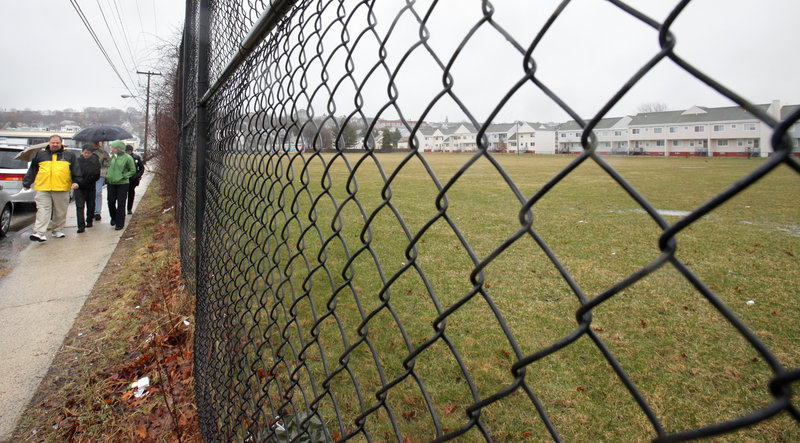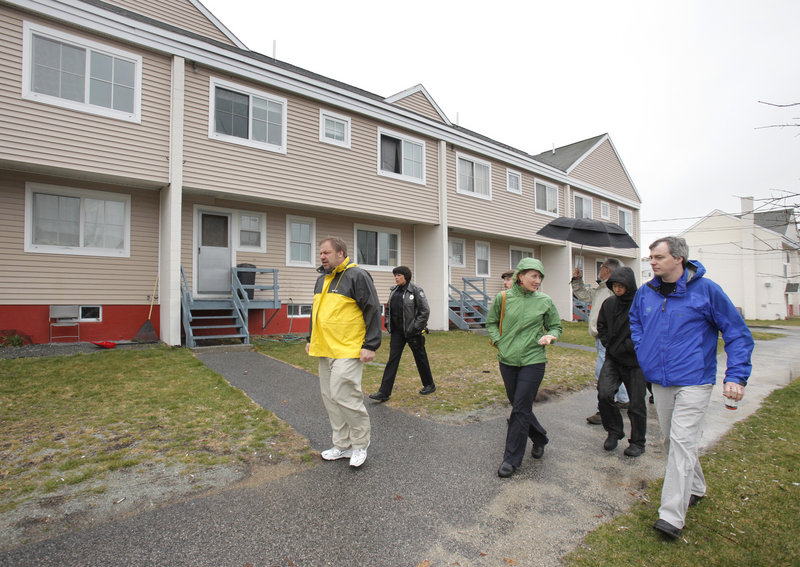PORTLAND – How can the city attract investment to a downtrodden area without pushing poor people out?
That was the central issue Tuesday as residents engaged with national experts in land use and economic development during meetings about the East Bayside neighborhood.
The experts are taking a three-day crash course on the 130-acre neighborhood, working with city planners, students from the University of Southern Maine’s Muskie School of Public Service and more than a dozen local architects.
They plan to introduce a “vision” for the neighborhood at a public meeting at Portland High School at 6 p.m. Thursday.
Portland is one of seven communities around the country that won grants from the American Institute of Architects that provide technical assistance for neighborhood revitalization.
Alex Endy, president of the East Bayside Neighborhood Association, said his group is looking for new development that provides opportunities for residents, rather than displacing them.
“We want to take the neighborhood to the next level,” he said. “But rather than wash it away, let’s build something on top of it.”
The neighborhood is bounded on the west by Franklin Arterial, the east by Washington Avenue, the north by Marginal Way and the south by Congress Street.
The area has fallen behind other parts in the city in attracting private investment. Its property values are among the lowest in the region, and there are several industrial buildings near Marginal Way that are largely vacant. There are 170 units of public housing.
Unlike other neighborhoods in the city, East Bayside lacks the “sense of place” that attracts private investment, said Neil Takemoto, who founded CoolTown Beta Communities, an economic development firm in Washington, D.C.
Portland, though, is making a push to improve the neighborhood, including the construction of sidewalks, a new playground and the new Bayside Trail.
On Tuesday, Takemoto and other national experts took a tour of the neighborhood in a Portland Housing Authority van. They met later with more than 75 people for roundtable discussions at the Root Cellar on Washington Avenue.
The seven experts include a youth development consultant from Virginia, a community development specialist from Maryland, a landscape architect from California, a civil engineer from Seattle and an architect from Seattle who specializes in historic preservation and downtown revitalization.
People who attended the discussions said they value the neighborhood’s rich ethnic mix. According to census data, it’s the most diverse neighborhood in northern New England.
The area near Marginal Way is home to a growing community of artists and other “urban pioneers” who are taking advantage of low rents.
That area is now zoned for light industry. Changing the zoning to allow for a greater variety of businesses, including restaurants, would attract a surge of investment, said Alex Jaegerman, director of the city’s planning division.
“Once you release the zoning, you release a lot of economic power as well,” he said.
Jill Dalton, an artist who is vice president of the East Bayside Neighborhood Association, said she doesn’t understand how development can occur without displacing artists who occupy some of the industrial buildings.
“How does the good stuff get preserved?” she asked.
Ronald Gan, who runs a barbecue cart on Washington Avenue, said that fears about gentrification are unwarranted because development will occur at a slow pace. He said he hopes that those fears won’t cause people to stand in the way of much-needed economic development.
“Take the shackles off, you will be surprised by how much the market will find its way into the neighborhood,” he said.
Jed Rathband, a public relations professional who bought a house on Everett Street four years ago and has fixed it up, said it’s impossible to improve an area without raising the cost of real estate and rents.
“It’s not every day you get to be part of the solution and part of the problem,” he said.
Takemoto, however, said other cities have found ways improve neighborhoods without pushing poor people out.
He said community groups, city officials, property owners and developers must work together to form a common vision. He said social networking sites on the Internet have played a critical role in bringing people together.
He gestured to the people discussing the neighborhood’s future. The room was filled with residents, bankers, developers, property owners, artists and city officials.
“We want to keep the conversations going,” he said.
Staff Writer Tom Bell can be contacted at 791-6369 or at: tbell@pressherald.com
Copy the Story Link
Send questions/comments to the editors.





Success. Please wait for the page to reload. If the page does not reload within 5 seconds, please refresh the page.
Enter your email and password to access comments.
Hi, to comment on stories you must . This profile is in addition to your subscription and website login.
Already have a commenting profile? .
Invalid username/password.
Please check your email to confirm and complete your registration.
Only subscribers are eligible to post comments. Please subscribe or login first for digital access. Here’s why.
Use the form below to reset your password. When you've submitted your account email, we will send an email with a reset code.